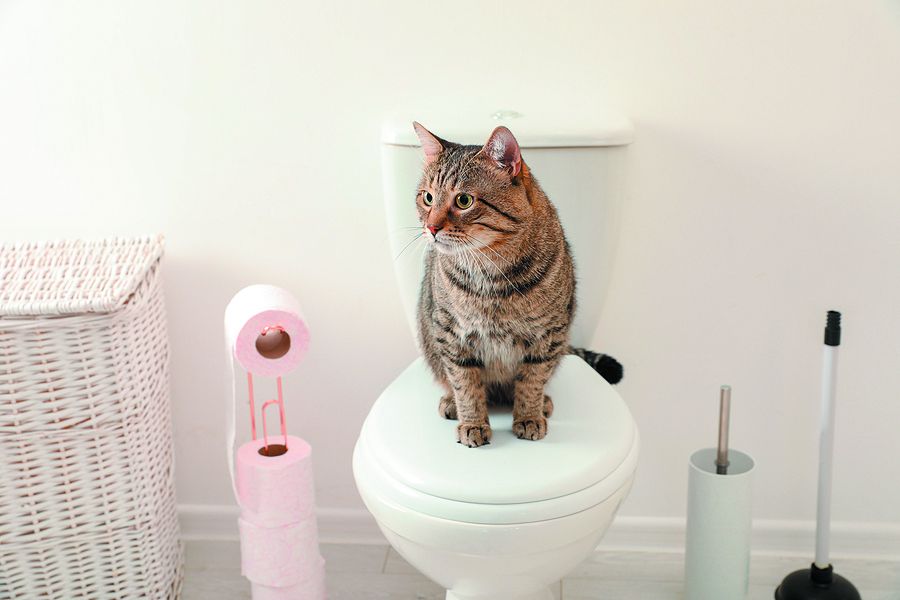Don't Flush Cat Poop Down Your Toilet - Preserve Your Home's Pipe System
Don't Flush Cat Poop Down Your Toilet - Preserve Your Home's Pipe System
Blog Article
Right here in the next paragraph you can discover a lot of amazing facts around Can You Flush Cat Poo or Litter Down the Toilet?.

Introduction
As feline proprietors, it's important to be mindful of just how we deal with our feline good friends' waste. While it may appear hassle-free to flush feline poop down the bathroom, this method can have destructive consequences for both the environment and human health and wellness.
Ecological Impact
Flushing cat poop introduces damaging microorganisms and bloodsuckers into the water system, posturing a considerable risk to water ecosystems. These pollutants can adversely impact marine life and concession water quality.
Health and wellness Risks
In addition to ecological worries, purging feline waste can likewise posture wellness risks to people. Feline feces might have Toxoplasma gondii, a parasite that can cause toxoplasmosis-- a potentially serious ailment, especially for expecting ladies and people with damaged body immune systems.
Alternatives to Flushing
Fortunately, there are safer and much more liable methods to deal with feline poop. Think about the following options:
1. Scoop and Dispose in Trash
The most common approach of taking care of cat poop is to scoop it into an eco-friendly bag and toss it in the trash. Make certain to utilize a devoted clutter inside story and deal with the waste without delay.
2. Usage Biodegradable Litter
Opt for biodegradable cat trash made from materials such as corn or wheat. These clutters are environmentally friendly and can be safely disposed of in the garbage.
3. Bury in the Yard
If you have a backyard, think about burying pet cat waste in an assigned location away from veggie gardens and water resources. Make sure to dig deep enough to stop contamination of groundwater.
4. Set Up a Pet Waste Disposal System
Invest in a pet dog garbage disposal system specifically developed for feline waste. These systems make use of enzymes to break down the waste, decreasing smell and environmental influence.
Final thought
Accountable pet dog ownership expands past offering food and sanctuary-- it likewise includes correct waste administration. By refraining from purging cat poop down the commode and opting for alternative disposal approaches, we can decrease our environmental footprint and safeguard human health.
Why Can’t I Flush Cat Poop?
It Spreads a Parasite
Cats are frequently infected with a parasite called toxoplasma gondii. The parasite causes an infection called toxoplasmosis. It is usually harmless to cats. The parasite only uses cat poop as a host for its eggs. Otherwise, the cat’s immune system usually keeps the infection at low enough levels to maintain its own health. But it does not stop the develop of eggs. These eggs are tiny and surprisingly tough. They may survive for a year before they begin to grow. But that’s the problem.
Our wastewater system is not designed to deal with toxoplasmosis eggs. Instead, most eggs will flush from your toilet into sewers and wastewater management plants. After the sewage is treated for many other harmful things in it, it is typically released into local rivers, lakes, or oceans. Here, the toxoplasmosis eggs can find new hosts, including starfish, crabs, otters, and many other wildlife. For many, this is a significant risk to their health. Toxoplasmosis can also end up infecting water sources that are important for agriculture, which means our deer, pigs, and sheep can get infected too.
Is There Risk to Humans?
There can be a risk to human life from flushing cat poop down the toilet. If you do so, the parasites from your cat’s poop can end up in shellfish, game animals, or livestock. If this meat is then served raw or undercooked, the people who eat it can get sick.
In fact, according to the CDC, 40 million people in the United States are infected with toxoplasma gondii. They get it from exposure to infected seafood, or from some kind of cat poop contamination, like drinking from a stream that is contaminated or touching anything that has come into contact with cat poop. That includes just cleaning a cat litter box.
Most people who get infected with these parasites will not develop any symptoms. However, for pregnant women or for those with compromised immune systems, the parasite can cause severe health problems.
How to Handle Cat Poop
The best way to handle cat poop is actually to clean the box more often. The eggs that the parasite sheds will not become active until one to five days after the cat poops. That means that if you clean daily, you’re much less likely to come into direct contact with infectious eggs.
That said, always dispose of cat poop in the garbage and not down the toilet. Wash your hands before and after you clean the litter box, and bring the bag of poop right outside to your garbage bins.
https://trenchlesssolutionsusa.com/why-cant-i-flush-cat-poop/

I'm certainly very drawn to Don’t flush cat feces down the toilet and I hope you appreciated my entry. Remember to set aside a second to share this blog post if you appreciated it. I cherish reading our article about How to Dispose of Cat Poop and Litter Without Plastic Bags.
Top Article Report this page